- Details
- Hits: 3417
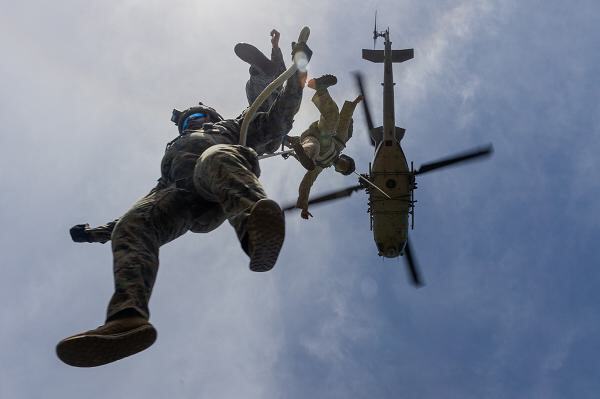
Okinawa, Japan. (October 2, 2024): America’s Special Forces go where they want to go and they get there in some amazing ways. In this photo by Corporal Kyle Chan, Marines with III MEF are extracted from the jungle by a UH-1Y Venom helicopter during helicopter rope suspension techniques (HRST) training. HRST is a set of techniques to insert/extract ground forces into or from difficult to reach terrain using helicopters. These methods include Rappelling, Fast roping, and Special Patrol Insertion/Extraction (SPIE) operations.
These methods were developed during the Vietnam War where helicopters were first used to insert small teams into the dense jungle or to retrieve troops from hostile situations. Today, special operators literally dive out of choppers using thick ropes to quickly drop to the ground. It is very much like leaping from an airplane and even more dangerous.
The first and most common insertion method is Rappelling which uses a seat harness connected to a D-ring to control the speed of the descent. This is a slow, but safer, method than the next choice, Fast roping.
Fast roping is like a firefighter sliding down a firehouse pole only using a thick rope that hangs down from the helicopter to the landing surface. The troops slide down the rope using their hands and without the safety harness used in Rappelling. That means any loss of concentration comes with the possibility of injury. The injuries one can sustain from fast-roping mishaps are similar to fall injuries resulting from parachute jump failure.
- Details
- Hits: 1504
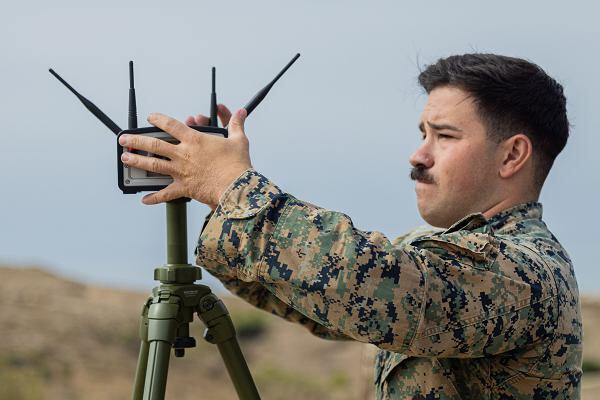
Camp Pendleton, California. (October 1, 2024): The Marine Corps would seem an unlikely place to begin a career in Meteorology, but in their business there is a serious need for weather “intelligence”. In this photo by Lance Corporal Nicole Stuart, Lance Corporal Dominic Albanese, a drone operator with Meteorological and Oceanographic Platoon, 1st Intelligence Battalion, I Marine Expeditionary Force Information Group, sets up a Base Station during Cobra Horizon 24.2. Cobra Horizon is a semiannual training exercise that focuses on meteorology and oceanographic science as it relates to Marine Corps missions. Accurate and timely weather forecasting can mean the difference between life and death in an amphibious assault.
Under the acronym METOC for Meteorology and Oceanography, weather forecasting is part of the Marines Information Warfare Community. These oceanographers and meteorologists analyze atmospheric conditions and ocean dynamics and advise mission planners on the latest environmental intelligence.
Often behind the scenes, these professionals work around the clock collecting data, studying atmospheric conditions, and issuing constantly updated forecasts. METOC forecasters go through a rigorous 9 to 12 months of training at Keesler Air Force Base, Mississippi where they study atmospheric physics and weather forecasting.
- Details
- Hits: 1045
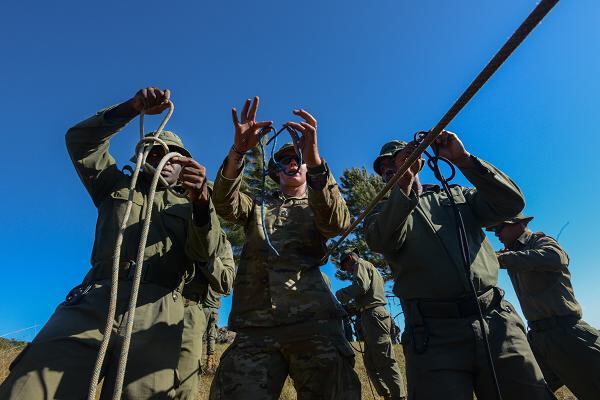
Nausori Highlands, Fiji. (October 4, 2024): They are separated by 5,700 miles of ocean, but that has not prevented the Nevada National Guard from striking a new partnership with the island nation of Fiji. In this photo by Sergeant First Class Whitney Hughes, U.S. Army Staff Sergeant Alec Canepa instructs his Fijian counterparts in military mountaineering techniques during Exercise Cartwheel 2024. The Nevada National Guard is partnered with Fiji and Tonga under the Department of Defense National Guard Bureau State Partnership Program. For twenty-six years, the program has paired American National Guard units with allied countries for training and humanitarian purposes.
This year’s exercise included two weeks of intensive training involving over four hundred multinational forces from seven nations, including the U.S., Fiji, Tonga, Australia, New Zealand, France, and the United Kingdom. The Nevada Guard, including Soldiers from the 609th Engineer Company, spearheaded key activities such as rappelling and live-fire exercises. The Americans also coordinated plans to come to Fiji’s rescue in a humanitarian crisis. The current Defense Cooperation Agreement between the U.S. and Fiji/Tonga includes security funding and considerable support for Fiji’s peacekeeping forces and Navy. The security cooperation agreement also calls for American military protection to ensure the territorial integrity of Fiji.
For the Nevada Soldiers, this was a chance to travel to an exotic locale to develop personal and cultural bonds with our allies in the Indo-Pacific.
- Details
- Hits: 1135
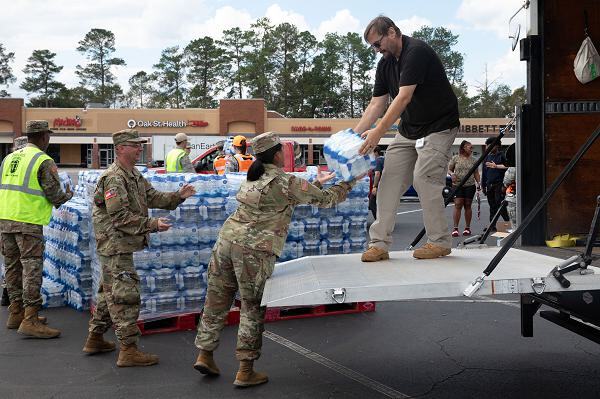
Augusta, Georgia. (September 30, 2024): Activated and commanded by the Governors of their respective States, America’s National Guard has come to the rescue of millions of Hurricane Helene victims and their efforts have just begun. In this photo by Specialist Ayanna Tillman, Georgia Army National Guard soldiers work with Georgia State Defense Force personnel to unload cases of water for distribution to hard hit neighborhoods. Currently, there are over 6,700 Guardsmen mobilized to provide response and recovery help, according to National Guard Bureau Officials. They also predict the recovery will likely be a long process.
After landfall near Tallahassee, Florida, Helene slammed into the Southeast including the Carolinas, Georgia, Tennessee, and Virginia. As of this writing, 220 people are confirmed dead and hundreds are still missing. Survivors lack basic services like running water and electricity and many are isolated in remote towns where roads have disappeared and there is no cell service.
It has truly been a national response. Soldiers and Airmen from sixteen states have blanketed the area with patrols, helping clear debris, and rescuing stranded people with high water vehicles and boats. The troops delivered all manner of relief supplies to grateful neighbors using more than forty helicopters and over six hundred military vehicles. The Guard helped clear routes for local first responders and conducted numerous search and rescue operations.
The relief operation also includes some of America’s most elite units. The XVIII Airborne Corps deployed a thousand Soldiers to western North Carolina and the 82nd Airborne Division delivered food, water, and other critical aid to North Carolina.
This recovery promises to be long but America can be proud of the National Guard and their rapid response to this and other crises.
- Details
- Hits: 972
Appalachia, October 8, 2024,
State-activated guard units are continuing to deliver the emergency disaster help desperately needed in the Appalachians after Helene’s destruction.
They continue to save their neighbors in the devastated Carolinas, Northern Georgia and Eastern Tennessee.
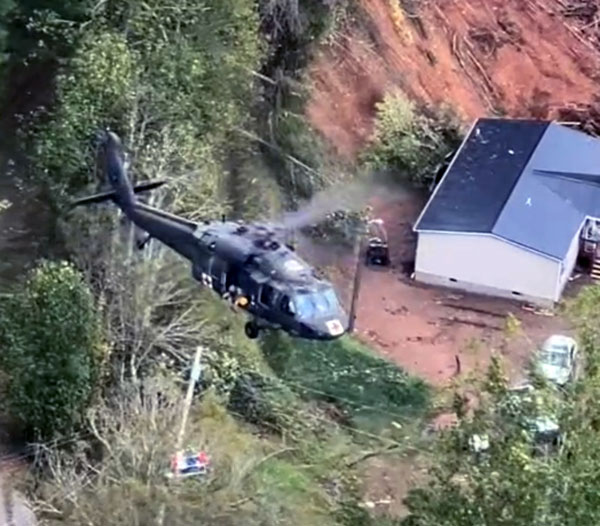
SOT is privileged to send $5,000 monetary relief for South Carolina guard members and their families while they take care of everyone else. Awesome Americans in action. Tangible action. Practical action. Knowledgeable action. Action that preserves lives in the real world.
SOT also re-authorized significant food and water distributions for ongoing guard units performing these critical activities, all picked up by 5-tons and taken by air into the devastated areas to sustain the guard’s work.
Makes you proud to be an American when you see how people step up directly for one another.
~~ The SOT Team
- Details
- Hits: 1031
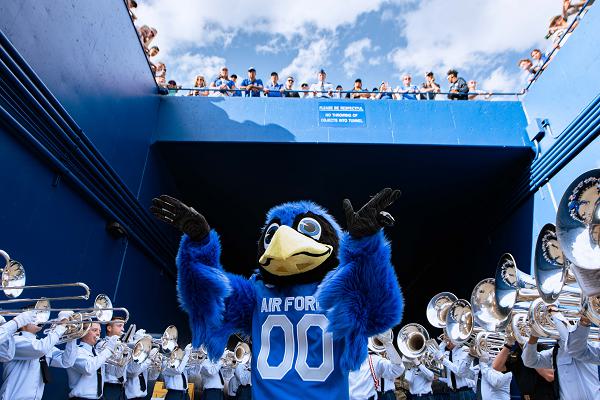
Colorado Springs, Colorado. (September 27, 2024): In this photo by Dylan Smith, the Air Force’s costumed mascot, “The Bird,” performs in the tunnel prior to a football game against San Jose State University at Falcon Stadium. The service chose the falcon, known for its speed, power, and agility. But the burning question is... “Does the Air Force Academy house and train live falcons?”
The Academy does indeed have an aviary of falcons who are maintained by twelve cadet falconers chosen from each new class to replace graduating seniors. The Academy first adopted live falcons in 1959, and they have performed at public events and football games ever since.
Many cadet handlers have little or no experience with birds before coming to the Academy, so it is vital they receive proper instruction. Cadets must learn to successfully train and safely maintain the physical health of the birds. Falconry candidates undergo a weekslong tryout process that includes a raptor licensing exam on biology, feeding habits, and health care of birds of prey.


